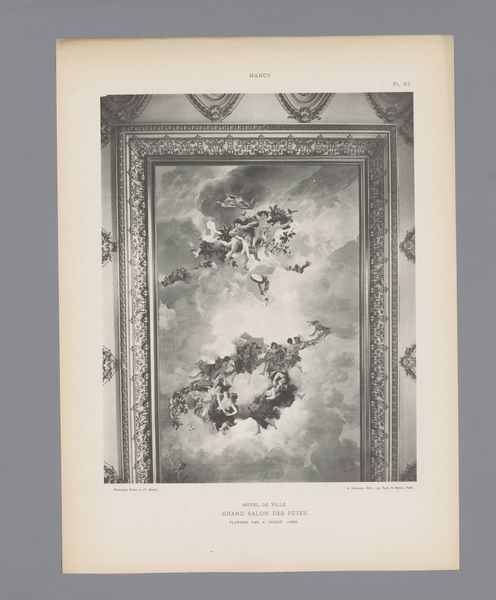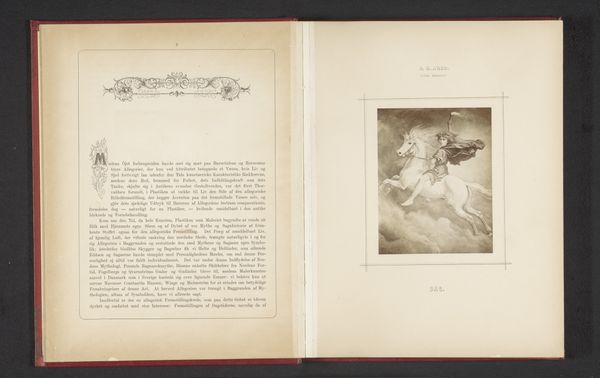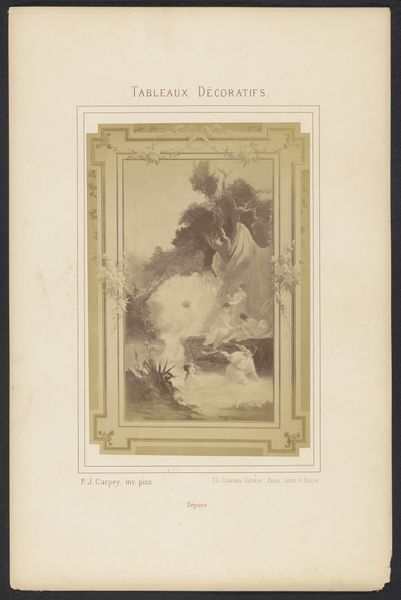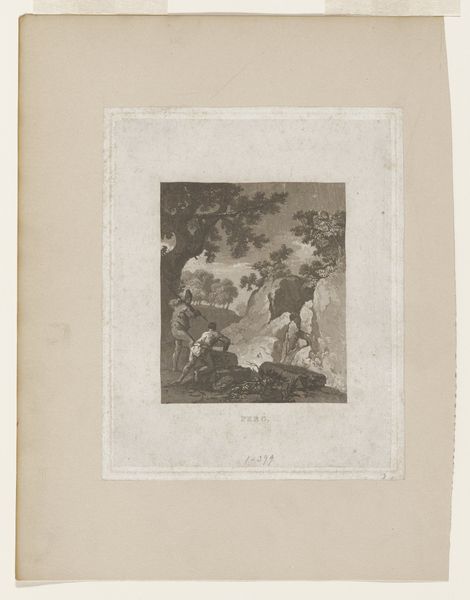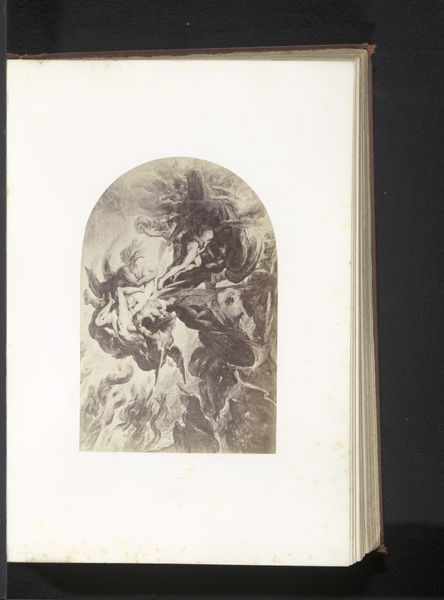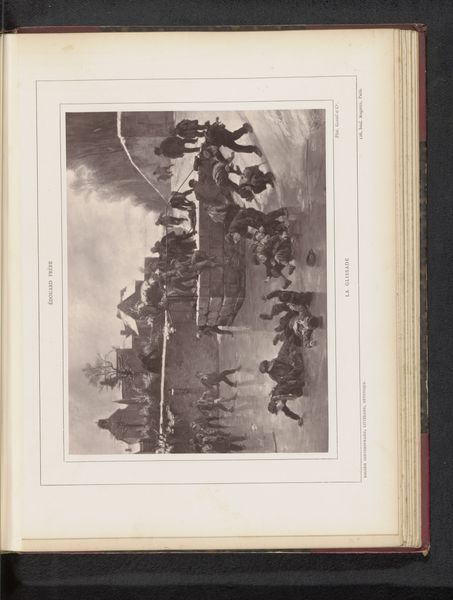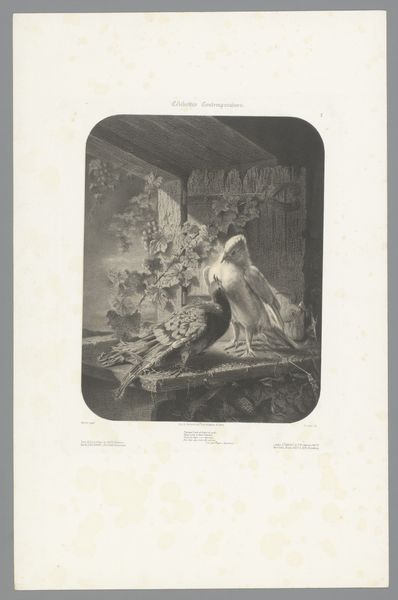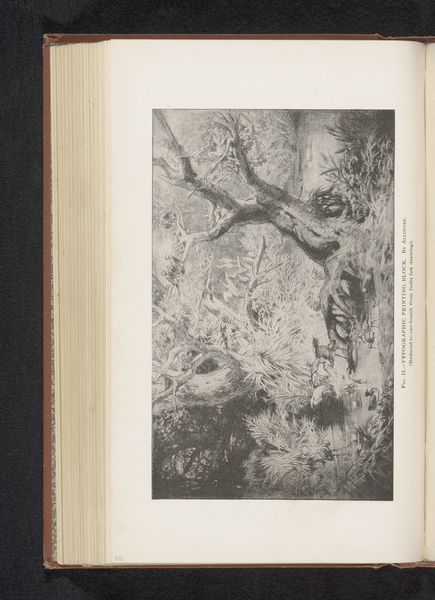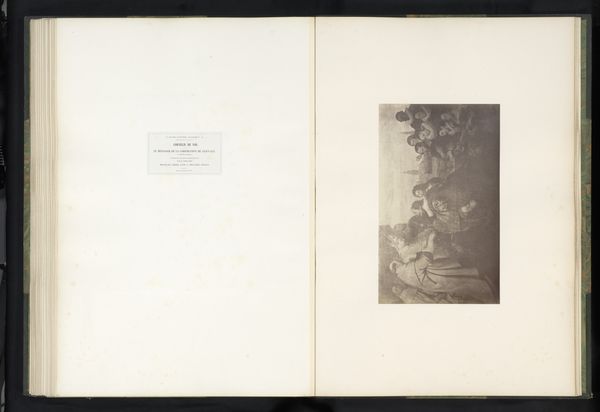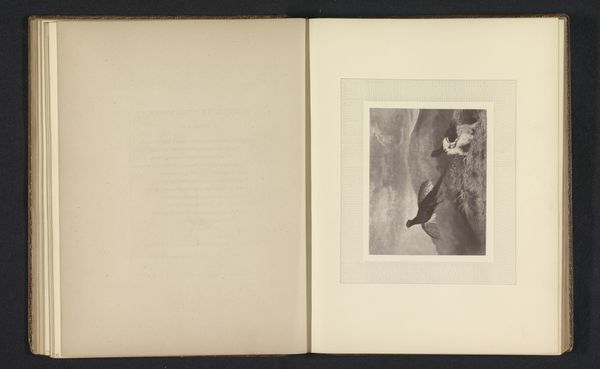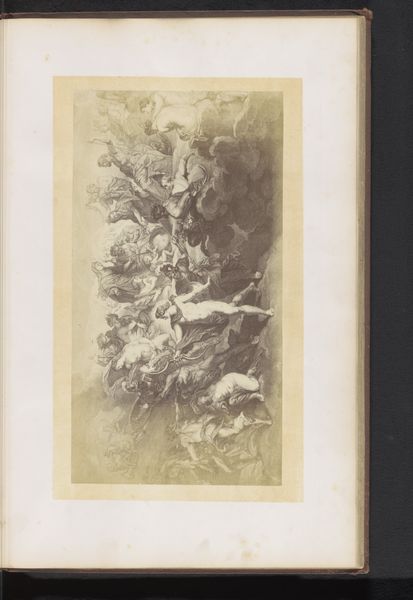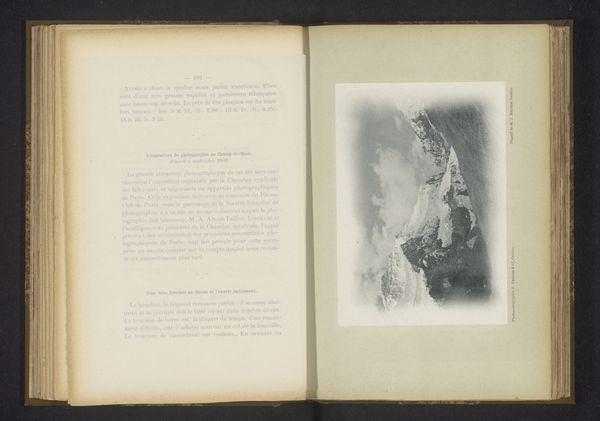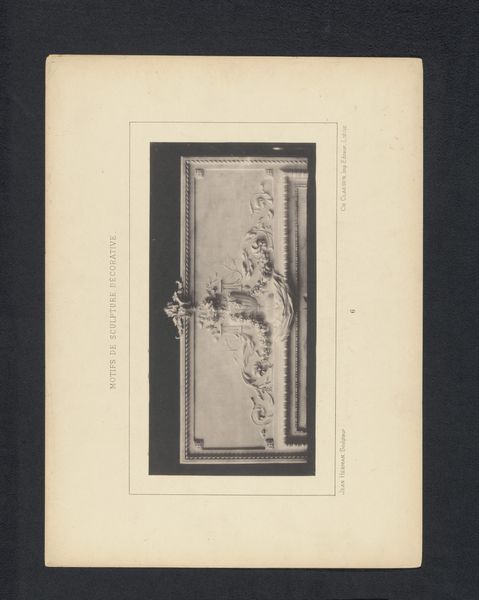
Dimensions: height 401 mm, width 298 mm
Copyright: Rijks Museum: Open Domain
Editor: This is a photograph of "Plafond van de feestzaal in het stadhuis te Nancy," a fresco created before 1896. The photograph is black and white and features a scene with figures in the clouds and in a tree. The overall feeling I get is one of grandeur and maybe even idealized representation. How do you interpret this work, particularly considering its setting in a town hall? Curator: It’s crucial to view this fresco not just as a decorative element, but as a visual assertion of power and ideology. The placement in the town hall—a public space—immediately tells us it’s meant to communicate something to the citizens of Nancy. Considering its creation was prior to 1896, how do you see this imagery playing into the prevailing narratives of nationalism and civic virtue at the time? Editor: Well, with the allegorical figures and classical style, it feels like a direct reference to earlier concepts of citizenship. It definitely idealizes history, but how might that serve a purpose for the people who were viewing it? Curator: Exactly! The use of allegory would evoke specific virtues and historical connections. In whose eyes, and at whose expense? The neoclassical style, common in academic art of the period, further legitimizes these messages, linking the present to a glorified past. The figures floating above could represent abstract concepts of justice or prosperity that are being ‘granted’ to the town, perhaps justifying the current political structures. What underlying assumptions about gender and power do you detect here? Editor: I guess the female figures in the clouds might represent the abstract concepts, like you said, while maybe the figures in the tree are...the people of Nancy looking to those abstractions? It still seems a little hierarchical. Curator: Precisely. It’s important to remember that art rarely exists in a vacuum. Understanding who commissioned it, the social context, and the power dynamics at play help us critically analyze what stories this ceiling is really trying to tell. What do you take away from viewing it with those questions in mind? Editor: I see how a piece like this, which at first seems beautiful and harmless, actually reinforces a specific worldview about power. I hadn't thought so critically about it initially.
Comments
No comments
Be the first to comment and join the conversation on the ultimate creative platform.
